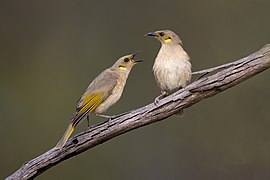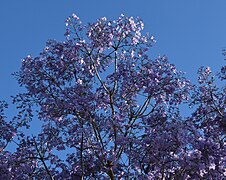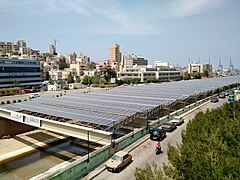Chaukhira
This article is a work-in-progress because it is incomplete and pending further input from an author. Note: The contents of this article are not considered canonical and may be inaccurate. Please comment on this article's talk page to share your input, comments and questions. |
Script error: The module returned a nil value. It is supposed to return an export table.
Trade Island of Chaukira
Chaukhira | |
|---|---|
 Abu-Ouncanobi from the air | |
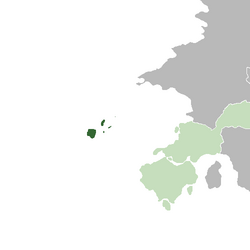 Location of the Burgoignesc province of Chaukhira Off the coast of Audonia (gray) Bulkh, in real union with Burgundie (light green) | |
| Nation | |
| Constituent Country equivalent | Burgoignesc Overseas Territory Assembly |
| Geographic Designation | Audonio-Alshari Burgundie |
| Capital | Abu-Ouncanobi |
| Government | |
| • Governor-Epistates | Marcel-Anwar bin Qadafim |
| Area | |
| • Total | 9,090.858 km2 (3,510.000 sq mi) |
| Population (2030) | |
| • Total | 1,254,493 |
| • Density | 140/km2 (360/sq mi) |
| Demonym | Chaukhiroise |
Geography
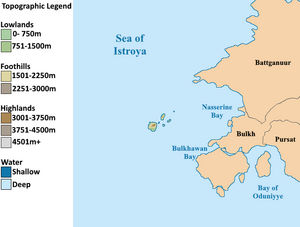
The largest and most western island is called Chaukhira Maior (the small island off of it's northeastern coast is called Chaukhira Minor and is hardly referenced uniquely). The second largest, to the northeast is Taizerbo, the smallest to the extreme northeast is Taoulga, coming back to the southwest is Ghat, and in the center of the island cluster is Akhdaran.
Climate
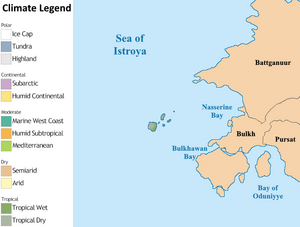
Chaukhira has a humid subtropical climate (Cfa) with "warm, sometimes hot" summers and "generally mild", to "cool" winters. The El Niño–Southern Oscillation, the Sea of Istroya Dipole and the Southern Annular Mode play an important role in determining Chaukhira's weather patterns: drought and bushfire on the one hand, and storms and flooding on the other. The weather is moderated by proximity to the ocean.
Extreme temperatures have ranged from 45.8 °C (114.4 °F) on 18 January 2013 to 2.1 °C (35.8 °F) on 22 June 1932. An average of 14.9 days a year have temperatures at or above 30 °C (86 °F). The hottest day on the islands occurred on 4 January 2020, where a high of 48.9 °C (120.0 °F) was recorded. The average annual temperature of the sea ranges from 18.5 °C (65.3 °F) in September to 23.7 °C (74.7 °F) in February. Chaukhira has an average of 7.2 hours of sunshine per day and 109.5 clear days annually. Frost is recorded early in the morning a few times in winter. Autumn and spring are the transitional seasons, with spring showing a larger temperature variation than autumn.
| Climate data for Chaukhira | |||||||||||||
|---|---|---|---|---|---|---|---|---|---|---|---|---|---|
| Month | Jan | Feb | Mar | Apr | May | Jun | Jul | Aug | Sep | Oct | Nov | Dec | Year |
| Record high °C (°F) | 46.4 (115.5) |
42.9 (109.2) |
41.2 (106.2) |
35.7 (96.3) |
29.1 (84.4) |
25.6 (78.1) |
26.7 (80.1) |
30.9 (87.6) |
35.9 (96.6) |
39.1 (102.4) |
43.4 (110.1) |
43.5 (110.3) |
46.4 (115.5) |
| Average high °C (°F) | 27.7 (81.9) |
27.1 (80.8) |
25.8 (78.4) |
23.3 (73.9) |
20.6 (69.1) |
18.1 (64.6) |
17.7 (63.9) |
19.1 (66.4) |
21.6 (70.9) |
23.6 (74.5) |
24.6 (76.3) |
26.4 (79.5) |
23.0 (73.4) |
| Average low °C (°F) | 20.0 (68.0) |
20.0 (68.0) |
18.5 (65.3) |
15.2 (59.4) |
12.1 (53.8) |
9.8 (49.6) |
8.5 (47.3) |
9.3 (48.7) |
11.9 (53.4) |
14.4 (57.9) |
16.5 (61.7) |
18.4 (65.1) |
14.5 (58.1) |
| Record low °C (°F) | 13.0 (55.4) |
12.0 (53.6) |
8.8 (47.8) |
7.1 (44.8) |
3.8 (38.8) |
2.2 (36.0) |
0.8 (33.4) |
3.2 (37.8) |
5.1 (41.2) |
6.0 (42.8) |
7.6 (45.7) |
11 (52) |
0.8 (33.4) |
| Average rainfall mm (inches) | 80.7 (3.18) |
117.2 (4.61) |
96.3 (3.79) |
98.2 (3.87) |
89.3 (3.52) |
125.9 (4.96) |
69.5 (2.74) |
63.3 (2.49) |
59.0 (2.32) |
55.5 (2.19) |
72.3 (2.85) |
67.1 (2.64) |
996.2 (39.22) |
| Average rainy days (≥ 1 mm) | 7.8 | 8.6 | 9.4 | 8.2 | 7.6 | 8.9 | 7.0 | 5.4 | 6.3 | 7.4 | 8.6 | 7.9 | 93.1 |
| Average afternoon relative humidity (%) | 59 | 62 | 60 | 58 | 59 | 58 | 53 | 46 | 49 | 52 | 56 | 57 | 56 |
| Average dew point °C (°F) | 16.2 (61.2) |
16.8 (62.2) |
15.5 (59.9) |
12.7 (54.9) |
9.9 (49.8) |
7.6 (45.7) |
5.6 (42.1) |
5.5 (41.9) |
7.7 (45.9) |
9.9 (49.8) |
12.3 (54.1) |
14.3 (57.7) |
11.2 (52.2) |
| Mean monthly sunshine hours | 232.5 | 205.9 | 210.8 | 213.0 | 204.6 | 171.0 | 207.7 | 248.0 | 243.0 | 244.9 | 222.0 | 235.6 | 2,639 |
| Source: ur mom | |||||||||||||
Flora and fauna
Many of the characteristic Audonian species—large mammals such as the elephant, rhinoceros, giraffe, zebra, and antelope and predators such as lions and leopards—do not exist on Chaukhira. In addition, the island has been spared the great variety of venomous snakes indigenous to the Audonian continent. Although it is assumed that most life forms on the island had an Audonian origin, isolation has allowed old species—elsewhere extinct—to survive and new species unique to the island to evolve. Thus, a great number of plant, insect, reptile, and fish species are endemic to Chaukhira, and all indigenous land mammal species—66 in all—are unique to the island. Chaukhira was once covered almost completely by forests, but slash and burn practices for dry rice and rubber cultivation, Secondary growth, which has replaced the original forest and consists to a large extent of traveller's trees, raffia palm, and baobabs, is found in many places. The country has some 900 species of orchid. Bananas, mangoes, coconut, vanilla, and other tropical plants grow throughout.
History
Prehistory
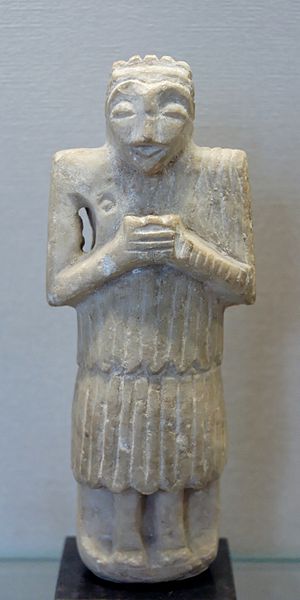
The Chaukhira archipelago was favored by the prevailing winds and currents that facilitated the early arrival of seafaring peoples from mainland Audonia (modern Bulkh and Battganuur), 8,000 years ago. These skilled navigators and resourceful foragers, dating back to the Neolithic period, established small, scattered communities along the coastlines, utilizing the abundant marine resources and fertile soils to sustain their livelihoods. Over the millennia these early settlers developed distinct cultural traditions, crafting intricate tools and ornaments from shells, bone, and stone, indicative of a deep connection to the natural world. Chaukhira's location became a crossroads of early maritime routes, fostered a vibrant network of trade and exchange, evident in the presence of imported goods, primarily from modern day Bulkh. As populations grew, chiefdoms emerged, characterized by hierarchical social structures and centralized authority, playing a crucial role in organizing trade and maintaining social order. Prehistoric Chaukhiroise cosmology was deeply intertwined with the natural world, evident in their reverence for the sea, the sky, and the spirits believed to inhabit the islands.
Chaukhira in the Umaronid Empire
During the Bronze Age, the Chaukhira archipelago fell under the sway of the Umaronid Empire. From the Umaronid perspective, the Chaukhira archipelago presented a compelling economic prize. The islands' fertile soils and diverse ecosystems provided a wealth of resources, including agricultural surplus, marine bounty, timber, and fibers. The Chaukhiroise people's exceptional skills in craftsmanship and seafaring traditions enriched the Umaronid economy and naval capabilities. Under the leadership of Satrap Parsa, a seasoned diplomat and strategist, the Umaronids established a modest trading outpost on Parsa Darya's northern coast, Vāreš. The outpost quickly became a hub for exchanging Umaronid goods, such as bronze tools and intricately crafted seals, for Chaukhiroise fish, pearls, and timber. Umaronid artisans and craftsmen settled in Vāreš, introducing new techniques in pottery, weaving, and metalworking. Chaukhiroise mariners, in turn, shared their knowledge of the archipelago's waters and currents, facilitating Umaronid exploration of the surrounding islands. Satrap Aryaman, Parsa's successor, adopted a more assertive approach. He expanded Vāreš into a fortified settlement, complete with administrative buildings and military barracks. Through a combination of diplomacy and military might, Aryaman persuaded or coerced the local chiefdoms into paying tribute to the Umaronid Empire. This tribute, often in the form of agricultural surplus, marine resources, and skilled labor, fueled the empire's economic growth and solidified its dominance over Chaukhira. Under Satrap Mithra, a visionary leader with a passion for urban planning, Chaukhira underwent a remarkable transformation. Mithra initiated the construction of Arya Darya, a sprawling urban center on Parsa Darya's southern coast. Arya Darya boasted grid-like streets, multi-story houses, a sophisticated drainage system, and a grand marketplace where merchants from across the empire convened. Chaukhira entered a golden age of prosperity under Satrap Zarathushtra, a wise and benevolent ruler who fostered peace and trade. Zarathushtra encouraged agricultural innovation, leading to increased yields and a thriving export market for Chaukhiroise produce. He also patronized the arts, commissioning magnificent temples and palaces adorned with intricate carvings and murals. The decline of the Umaronid Empire on the mainland had a ripple effect on Chaukhira. As trade routes disrupted and resources dwindled, Arya Darya's grandeur faded. The once-bustling marketplace grew quiet, and the grand temples fell into disrepair. While the Umaronids maintained a nominal presence on the islands, their authority gradually waned.
Classical Antiquity
Beginning in the 6th century BCE, [[Ancient Istroyan civilization|Istroyan mariners, hailing from the bustling city-states of northeastern Sarpedon, embarked on exploratory voyages across the Sea of Istroya. Drawn by tales of fertile lands, exotic spices, and lucrative trade opportunities, they established a series of colonies along the southern coast of Battganuur. These colonies, such as Alexandropolis (modern-day Bandar Abbas) and Seleucia ad Mare (modern-day Bushehr), quickly grew into thriving centers of commerce, culture, and learning. The Istroyans brought with them their language, philosophy, art, and architectural traditions, which deeply influenced the local Persi populations. Over time, a unique fusion of [[Ancient Istroyan civilization|Istroyan and Persian cultures emerged, evident in the syncretic religious practices, the adoption of Istroyan architectural styles, and the widespread use of the Istroyan language in trade and administration. This cultural exchange left an enduring legacy, shaping the distinct identity of southern Battganuur for centuries to come.
In the twilight of the Umaronid Empire's reign over Chaukhira, [[Ancient Istroyan civilization|Istroyan explorers, merchants, and later colonists set their sights on these islands. The first [[Ancient Istroyan civilization|Istroyan vessels arrived in Chaukhira during the 13th century BCE. They established initial contact with the local Chaukhiroise people. The Istroyans quickly recognized the archipelago's potential as a valuable addition to their growing trade network. As trade relations flourished, Istroyan merchants established small outposts on the main island of Parsa Darya, strategically positioned to facilitate commerce and cultural exchange. These outposts, initially modest settlements, gradually grew into bustling centers of activity, attracting Istroyan artisans, craftsmen, and scholars, called Pente Nesoi by the [[Ancient Istroyan civilization|Istroyans. The influx of Istroyan culture had a profound impact on Chaukhira. The islanders adopted elements of [[Ancient Istroyan civilization|Istroyan language, philosophy, and art, blending them with their own traditions to create a unique cultural fusion. [[Ancient Istroyan civilization|Istroyan architectural styles influenced the construction of new buildings, while their religious beliefs intermingled with the existing spiritual practices of the Chaukhiroise. This period of cultural exchange laid the foundation for a distinct Istroyo-Chaukhiroise identity that would endure for centuries. By the 6th century BCE, Chaukhira had become an integral part of the [[Ancient Istroyan civilization|Istroyan sphere of influence. Under the leadership of ambitious [[Ancient Istroyan civilization|Istroyan rulers, the islands were politically unified, forming a cohesive entity within the broader [[Ancient Istroyan civilization|Istroyan civilization. This newfound unity enabled Chaukhira to participate more actively in regional trade networks and expand its influence beyond its shores. Chaukhira experienced a golden age of prosperity during the height of the ancient Istroyan civilization. The islands' strategic location as a pass through for exotic Audonian commodities, coupled with their fertile soils and abundant marine resources, made them a vital economic hub. Chaukhira exported agricultural produce, timber, pearls, and other valuable commodities to the [[Ancient Istroyan civilization|Istroyan heartlands and other parts of the ancient world, like Great Levantia. In return, the islands received luxury goods, advanced technologies, and new ideas from across the [[Ancient Istroyan civilization|Istroyan realm. This economic prosperity fueled a cultural renaissance, as Chaukhiroise artists, scholars, and philosophers produced works that reflected the unique blend of [[Ancient Istroyan civilization|Istroyan and local traditions. However, the rise of the Oduniyyad Caliphate in the 9th century CE brought an end to [[Ancient Istroyan civilization|Istroyan dominance. The Caliphate's powerful military forces swept across the region, conquering Chaukhira and forcibly imposing Islam upon its inhabitants. The archipelago's cultural and religious landscape was irrevocably altered, as mosques replaced [[Ancient Istroyan civilization|Istroyan temples and Arabic supplanted the [[Ancient Istroyan civilization|Istroyan language in many spheres of life.
Medieval period
Early modern history
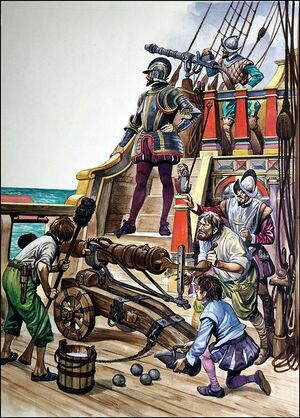 |
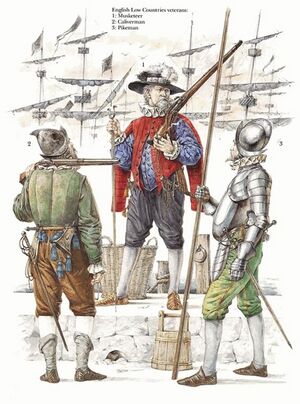 |
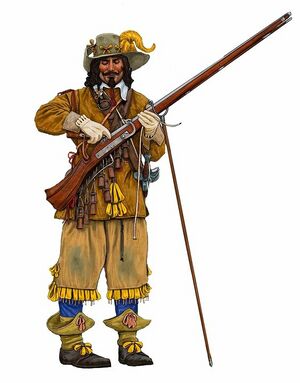 |
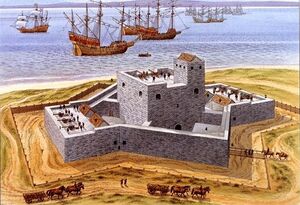 |
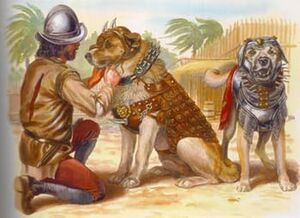 |
 |

- Coffee plantation
- Coaling station
- Rubber plantation
Late modern period
Contemporary period
Government
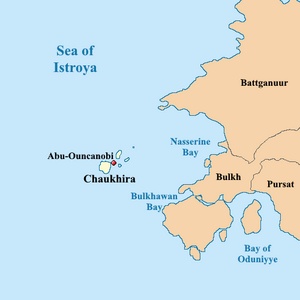
| This article is part of a series on the |
| BORA |
|---|
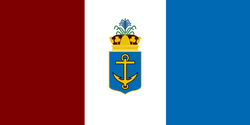 |
| Statistics |
|
| Key topics |
| Provinces |
|
Burgundie portal |
Chaukhira is part of the Burgoignesc Overseas Territory Assembly's Audonio-Alshari Burgundie geographic designation. Burgoignesc Overseas Territory Assembly is a constituent country equivalent of Burgundie with its own assembly, prime minister, budget, and laws. Burgundie's national governmental influence is limited to subsidies, education, and security, however, its financial and cultural institutes cast a long shadow across Sudmoll.
Chaukhira is a province within Burgoignesc Overseas Territory Assembly with its own semi-elected Governor-Epistates, representative legislative body, and court system.
Chaukhiroise are Burgoigniacs/Burgoignix with complete civil and economic rights, and citizenship (political rights) under the same federal service criteria as all residents of Burgundie. Burgoignesc is the official language but Arabic and Burgoignesc are both in use. However, there was a time during the 1960s and 1970s when children were forbidden to speak Arabic in schools. Arabic is now taught in schools; it is sometimes even a requirement for employment.
Provincial executive
The provincial executive is the Governor-Epistates. Three candidates are elected by a single transferable vote election held every 5 years, the three candidates are presented to the Court of St. Alphador and the next Governor-Epistates is chosen from these candidates. If the citizenry rejects the selection, a run-off election is held with the remaining two candidates.
Provincial legislature
Like the Citizens Court of the National Assembly (Burg. La Assemblee de Ciutadans de l'Assemblee Nacional, ACAN), The Chaukhiroise Citizen's Court of the Provincial Assembly is a unicameral legislator. It makes provincial law, has the power of the provincial purse, and has the power of impeachment, by which it can remove sitting members of the provincial government. The Assembly has three seats for each province, one for the Burgoignesc Overseas Territory Assembly's Chaukhira liaison, 3 for the clergy, 3 seats reserved for municipal leaders, and 3 for a rota of private business leaders. On 6 occasions throughout the year 3 more seats are opened to the public to debate topics that are not on the annual legislative agenda.
Administrative divisions and local governance
Military
| Abu-Ouncanobi International Airport and Airbase | |
|---|---|
| | |
| Site information | |
| Owner | Burgoignesc Security Forces |
| Operator | Royal Air Service of Burgundie |
| Controlled by | TBD |
| Condition | Operational |
| Site history | |
| Built | TBD |
| Garrison information | |
| Occupants | Navy
|
Chaukhira falls under the Navy's Grand Ularien Command, the Army's Darian Audonian Command, the Royal Air Service's Audonian Command, and the Vocivine's Ularien Command. Chaukhira's strategic location means it is a major military hub for all branches of the Burgoignesc Security Forces with large basing facilities existing for the army (in particular the Burgoignesc Foreign Legion), navy, Royal Air Service, and Vocivine.
Chaukhira is the home of the Navy of Burgundie's 8th Fleet, Rapid Deployment Group 1 Burg: Groupement Disembarkement Rapide no. 1, Expeditionary Strike Group Kandahar Resolve, and Sustainment Group Ever Present. It is the barracks for elements of the Puhkgoignesc Gorkha Rifles, especially its aviation assets and repair facilities.
Emergency response
National Gendarmerie
National Gendarmerie of Burgundie, Overseas Gendarmerie, Middle Seas Command Chaukhira is under the jurisdiction of the Chaukhira Battalion of the Middle Seas Brigade of the Overseas Gendarmerie Division. The Chaukhira Battalion has 4 companies and an HQ section.
- A Company is assigned to the southern islands Chaukhira Maior and Minor, excluding the Port of Abu-Oun and the capital, Abu-Ouncanobi
- B Company is assigned to the northern islands Chaukhira (Taizerbo, Taoulga, Ghat, and Akhdaran)
- C Company is assigned to Abu-Ouncanobi, the city, and specializes in civil disturbances
- D Company is assigned to the Port of Abu-Oun , conducting supplemental port security
- The HQ section is also based in Abu-Ouncanobi
Revenue Guard
Revenue Guard, Grand Station of the Orient
Vice
Since 2003, the drug trade, especially the opium trade has become a major issue in Chaukhira when the Alainfisali Kishahurav network expanded onto the islands. The Revenue Guard's Grand Station of the Orient has increased patrols, monitoring, and personnel on the islands. The issue has also sparked a public health emergency which was called into effect in 2004 and remains in effect today.
Society
| This article is part of a series on the |
| Culture in Burgundie |
|---|
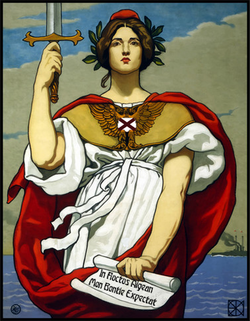 |
| Society |
| Arts and literature |
| Other |
|
Burgundie portal |
Religion, ethnicity, language, education, attitudes and worldview, kinship and family, cuisine, arts, literature, architecture, sports, symbols
Economy and infrastructure
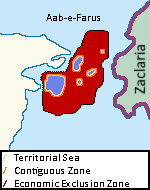
There are five sectors that encompass economic activity in Chaukhira: the processing industry, mining, agriculture, construction, and large and retail trade, and economic growth is also supported by tourism.
Standard of living
Employment
The agricultural sector is the cornerstone of employment in Chaukhira compared to other sectors with absorption reaching 1.9 million people. In addition to the agricultural sector, the other two sectors also absorb labor, namely the large and retail trade sector, car and motorcycle repair, and the processing industry. In the trade sector, there are 688,000 workers, and the processing industry reaches 279,300 people.
Burgundie's high emphasis on education translates to a particularly educated and skilled workforce, leading to lower unemployment compared to less educated countries in Audonia. The islands' economic diversity cushions against overreliance on any single industry, which has demonstrably made the island more resilient during downturns. Since Burgundie strives for Total Economic Engagement and espouses equal rights and opportunities regardless of gender, race, ethnicity, ability, or background, Chaukhira benefits from improved access to education and training, impacting employment prospects across various fields.
Agriculture
The agricultural sector is the backbone of the economy in Chaukhira harvesting rubber, oil palm, and coffee, tea, and vegetables across 74 thousand hectares of arable land. The potential of agricultural resources is quite prominent with an annual production of rice reaching 420 thousand tons, corn production reaching 28.9 thousand tons, soybeans production reaching 1.6 thousand tons, palm oil production reaching 271.8 thousand tons, coffee (dry beans) production reaching 13.52 thousand tons, coconut production reaching 6.5 thousand tons.
Tourism and hospitality
Resorts
Cruises
Recreation
Key tourism and hospitality companies
Logging/Mineral extraction
The coal deposits of Chaukhira amount to 2.24 billion tons or 48.45 percent of the total national reserves. The province also has 400 billion standard cubic feet of natural gas and 75.74 standard cubic feet of natural oil.
Paper milling
Mining
Drilling
Fishing
Fishing and fisheries
Distant-water fishing fleet
Local commercial fishing
Aquaculture
Main article: Aquaculture Aquatic life farming, in general
- Pisciculture- fish farming
- Mariculture- Saltwater fish farming
- shrimp farming
- oyster farming
- algaculture
Artisanal/heritage industries
Science and research
Manufacturing
Creative industries
Sports and leisure
Trade
| Port Abu-Oun | |
|---|---|
| Location | |
| Country | |
Transshipment
Main article: Transshipment
Customs and tariffs
Main article: Customs
Infrastructure
Maritime
Lighthouses
Rail
Chaukhira uses Standard gauge, 1,435 mm (4 ft 8+1⁄2 in) for both freight and passenger rail.
Istroyan Rail- Istroyan Rail (Burg: Istroie Ferroviaire), is the public-private joint-venture, intercity, passenger rail operator in Torlen, Antilles, Alcairet, and Chaukhira. It owns and operates all rail corridors, rights of way, and rolling stock that serve this purpose.
Roads
Air
Chaukhira has one international airport, the Abu-Ouncanobi International Airport and Airbase, in metro Abu-Ouncanobi.
| Name | Location | Type | Brief description | Code(s) | Picture |
|---|---|---|---|---|---|
| Abu-Ouncanobi International Airport and Airbase | Passenger and cargo | 24/7/365 air traffic control operations, 1x runway, capable of receiving all but the largest airframes, cargo terminal, passenger terminal, complete maintenance facilities, integrated customs and border control service | ATRO: ACB
ICAO: ACHB |
 |
Energy and electricity
-
Sola
Phone service and internet
Phone service is provided by Great Seas BurgunMobile, Vintage Wireless, and National Wireless Services, which have 47, 27, and 15 towers respectively across the island. 100% of the island and its population are covered by at least one of the services, National Wireless Services covering the less densely populated and therefore less profitable areas. Copperwire and fiberoptic phone still exists, one or both are required for all municipal and emergency response connections, and people along the route are allowed to buy in, but during emergencies their calls are de-prioritized in favor of emergency response calls, which is the same with mobile service on the island.
Highspeed internet service is provided by Great Seas BurgunMobile, Vintage Wireless, and Extron Burgundie Mobile. Residential internet speeds average 2-3 gigabits while commercial speeds are typically higher in the 3-4 gigabit range.
There is also a Global Maritime Distress and Safety System repeater and beacon on the island.
See also
- Pages using duplicate arguments in template calls
- Pages with non-numeric formatnum arguments
- Pages with broken file links
- Incomplete articles
- Pages using infobox settlement with no coordinates
- Pages using country topics with unknown parameters
- Burgundie
- Sub-national Regions in Burgundie
- Islands
- Burgoignesc islands





